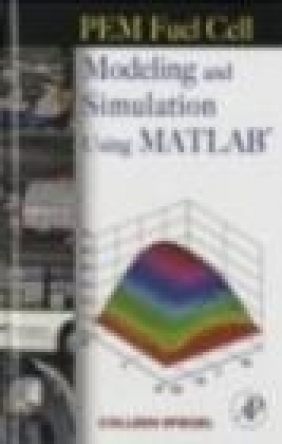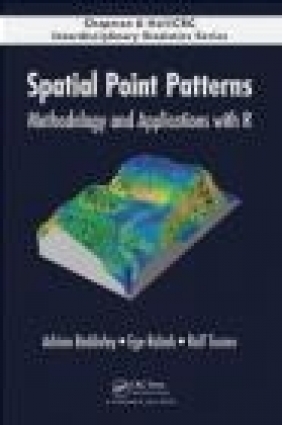Spatial Point Patterns
Ege Rubak, Adrian Baddeley, Rolf Turner
Spatial Point Patterns
Ege Rubak, Adrian Baddeley, Rolf Turner
- Producent: Apple
- Rok produkcji: 2015
- ISBN: 9781482210200
- Ilość stron: 828
- Oprawa: Twarda
Niedostępna
Opis: Spatial Point Patterns - Ege Rubak, Adrian Baddeley, Rolf Turner
Modern Statistical Methodology and Software for Analyzing Spatial Point Patterns Spatial Point Patterns: Methodology and Applications with R shows scientific researchers and applied statisticians from a wide range of fields how to analyze their spatial point pattern data. Making the techniques accessible to non-mathematicians, the authors draw on their 25 years of software development experiences, methodological research, and broad scientific collaborations to deliver a book that clearly and succinctly explains concepts and addresses real scientific questions. Practical Advice on Data Analysis and Guidance on the Validity and Applicability of Methods The first part of the book gives an introduction to R software, advice about collecting data, information about handling and manipulating data, and an accessible introduction to the basic concepts of point processes. The second part presents tools for exploratory data analysis, including non-parametric estimation of intensity, correlation, and spacing properties. The third part discusses model-fitting and statistical inference for point patterns. The final part describes point patterns with additional "structure," such as complicated marks, space-time observations, three- and higher-dimensional spaces, replicated observations, and point patterns constrained to a network of lines. Easily Analyze Your Own Data Throughout the book, the authors use their spatstat package, which is free, open-source code written in the R language. This package provides a wide range of capabilities for spatial point pattern data, from basic data handling to advanced analytic tools. The book focuses on practical needs from the user's perspective, offering answers to the most frequently asked questions in each chapter. "Spatial Point Patterns: Methodology and Applications with R is a rich statistical feast. It is by turns humorous, serious, occasionally rather direct, but never talks down to the reader, who is taken as having a well-motivated interest in spatial point patterns. I would argue that applied statisticians not yet conscious of such an interest will also relish the book's stated intention of bringing its topical treatments back into mainstream statistical practice. Being able to try everything out in R, largely using the spatstat package is a clear advantage; this is coupled with numerous relevant example data sets. While cherry picking is possible-the index is more than adequate-all readers are advised to read at least whole chapters, best complete parts of the book, because the information to be found there is part of a tightly woven fabric. Much can be re-read several times with both profit and pleasure by statisticians and non-statistician practitioners. Sustaining this level of attention to detail through a long book is a splendid achievement." -Roger Bivand, Professor of Geography, Norwegian School of Economics, and Author and Maintainer of Packages for Spatial Data Analysis, R Project "The analysis of spatial point patterns and processes is an exploding field of applied research across many science and social science disciplines. This is thanks in no small part to the development of open-licensed, well-documented, methodologically sophisticated software implementations. For at least a decade, the authors of this book have been at the forefront of a statistical programming revolution. However, with wider academic access to these point pattern-and-process methods, there has also come a pressing need for clearer guidance on good practice for applied researchers at all stages from graduate studies onward. Expressed in an elegant and accessible style, with substantial references for those wanting directions into the more specialist literature, as well as an excellent set of reproducible, multi-disciplinary case studies, this book provides exactly what is needed. It is highly likely to become a classic." -Andrew Bevan, Institute of Archaeology, University College LondonBASICS Introduction Point patterns Statistical methodology for point patterns About this book Software Essentials Introduction to RR Packages for R Introduction to spatstat Getting started with spatstat FAQ Collecting and Handling Point Pattern Data Surveys and experiments Data handling Entering point pattern data into spatstat Data errors and quirks Windows in spatstat Pixel images in spatstat Line segment patterns Collections of objects Interactive data entry in spatstat Reading GIS file formats FAQ Inspecting and Exploring Data Plotting Manipulating point patterns and windows Exploring images Using line segment patterns Tessellations FAQ Point Process Methods Motivation Basic definitions Complete spatial randomness Inhomogeneous Poisson process A menagerie of models Fundamental issues Goals of analysis EXPLORATORY DATA ANALYSIS Intensity Introduction Estimating homogeneous intensity Technical definition Quadrat counting Smoothing estimation of intensity function Investigating dependence of intensity on a covariate Formal tests of (non-)dependence on a covariate Hot spots, clusters, and local features Kernel smoothing of marks FAQ Correlation Introduction Manual methods The K-function Edge corrections for the K-function Function objects in spatstat The pair correlation function Standard errors and confidence intervals Testing whether a pattern is completely random Detecting anisotropy Adjusting for inhomogeneity Local indicators of spatial association Third- and higher-order summary statistics Theory FAQ Spacing Introduction Basic methods Nearest-neighbour function G and empty-space function F Confidence intervals and simulation envelopes Empty-space hazard J-function Inhomogeneous F-, G- and J-functions Anisotropy and the nearest-neighbour orientation Empty-space distance for a spatial pattern Distance from a point pattern to another spatial pattern Theory for edge corrections Palm distribution FAQ STATISTICAL INFERENCE Poisson Models Introduction Poisson point process models Fitting Poisson models in spatstat Statistical inference for Poisson models Alternative fitting methods More flexible models Theory Coarse quadrature approximation Fine pixel approximation Conditional logistic regression Approximate Bayesian inference Non-loglinear models Local likelihood FAQ Hypothesis Tests and Simulation Envelopes Introduction Concepts and terminology Testing for a covariate effect in a parametric model Quadrat counting tests Tests based on the cumulative distribution function Monte Carlo tests Monte Carlo tests based on summary functions Envelopes in spatstat Other presentations of envelope tests Dao-Genton test and envelopes Power of tests based on summary functions FAQ Model Validation Overview of validation techniques Relative intensity Residuals for Poisson processes Partial residual plots Added variable plots Validating the independence assumption Leverage and influence Theory for leverage and influence FAQ Cluster and Cox Models Introduction Cox processes Cluster processes Fitting Cox and cluster models to data Locally fitted models Theory FAQ Gibbs Models Introduction Conditional intensity Key concepts Statistical insights Fitting Gibbs models to data Pairwise interaction models Higher-order interactions Hybrids of Gibbs models Simulation Goodness-of-fit and validation for fitted Gibbs models Locally fitted models Theory: Gibbs processes Theory: Fitting Gibbs models Determinantal point processes FAQ Patterns of Several Types of Points Introduction Methodological issues Handling multitype point pattern data Exploratory analysis of intensity Multitype Poisson models Correlation and spacing Tests of randomness and independence Multitype Gibbs models Hierarchical interactions Multitype Cox and cluster processes Other multitype processes Theory FAQ ADDITIONAL STRUCTURE Higher-Dimensional Spaces and Marks Introduction Point patterns with numerical or multidimensional marks Three-dimensional point patterns Point patterns with any kinds of marks and coordinates FAQ Replicated Point Patterns and Designed Experiments Introduction Methodology Lists of objects Hyperframes Computing with hyperframes Replicated point pattern datasets in spatstat Exploratory data analysis Analysing summary functions from replicated patterns Poisson models Gibbs models Model validation Theory FAQ Point Patterns on a Linear Network Introduction Network geometry Data handling Intensity Poisson models Intensity on a tree Pair correlation function K-function FAQ
Szczegóły: Spatial Point Patterns - Ege Rubak, Adrian Baddeley, Rolf Turner
Tytuł: Spatial Point Patterns
Autor: Ege Rubak, Adrian Baddeley, Rolf Turner
Producent: Apple
ISBN: 9781482210200
Rok produkcji: 2015
Ilość stron: 828
Oprawa: Twarda





























